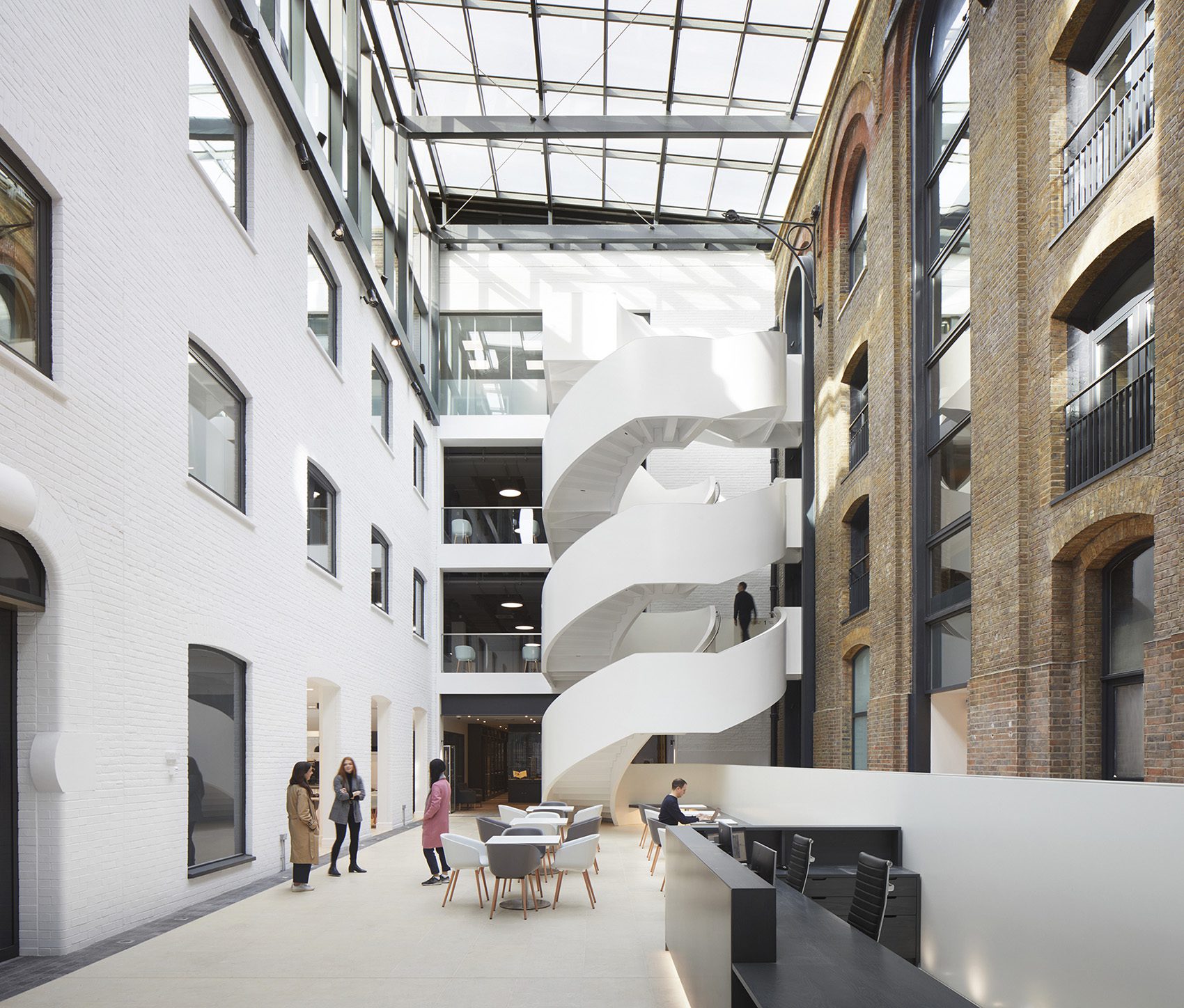Jonathan Spratt from Bennetts Associates argues that, for ‘young’ buildings from the 1990s and early 2000s architects should steer clients away from a comprehensive retrofit approach towards a strategy of ‘keyhole surgery’ – minimal interventions that have a transformative effect.
Commercial office space is subject to several contradictions right now. There is an abundance of vacant office space, but there is roughly four million square feet of office space under offer, well above the ten-year average. The pressures on designers, developers, and occupiers to be seen as environmentally aware and for buildings to attract an increasingly picky workforce are undoubtedly at play. As a result of these factors, each newly launched scheme trumpets its ‘sustainable’ credentials. Greenwashing, net-zero claims based on huge offsets and retrofits that are more demolition than retention have all been getting a lot of attention, suggesting that we need greater scrutiny of the terminology.
Retrofitting in particular needs clear standards. We are seeing more commercial buildings from the 1990s and early 2000sbeing flayed; brought back to the structural frame even though, arguably, there isn’t much wrong with them. In these cases, a more nuanced approach is required. These buildings constructed between 1990and 2010 in the boom years have ‘goodbones’, they are generally well-built, have efficient floorplates and cores, adaptable structures, and good floor-to-floor heights. In terms of the owner’s bottom line, however, they do not maximise the site’s potential, don’t offer a ‘next generation’ workspace, or are a little tired externally in comparison to new-build offices.
In reality, little needs to be done to rejuvenate these buildings. Architects need to help clients look beyond the fact that their asset may have a dated or even ‘ugly’ façade and prioritise sustainable, sensible interventions where they will have the most effect. Key-hole surgery rather than a triple heart bypass followed by Botox, nip-and-tuck. These discrete approaches can add value and maintain real character while still minimising embodied carbon and operational energy values.
At the Royal College of Obstetricians and Gynaecologists HQ in London, a courtyard was covered and reformatted to house a reception, café, breakout space and staircase leaving the external appearance largely unchanged.
Given that the façade is often one of the catalysts for development, it makes sense to start from there. Thermal performance and fabric airtightness are often used as a pretext to rip off the façade but the façade technology we have now usually only delivers a very slight improvement in U-value to that of 20 years ago and therefore minimal impact on operational energy consumption. Surely it would be wise in some cases to delay replacement for 15-20years and avoid the huge embodied-carbon outlay of a new façade and the disposal of the valuable material contained in the old.
There are several examples currently at the planning stage where buildings that have a ‘fortress’ aesthetic are proposed to be demolished or completely stripped back to create something more in line with current tastes. Simply reworking a solid, defensive façade to be more open, or reimagining a prominent corner, could activate the street scene. The creation of stronger relationships between public and private areas can make buildings feel more welcoming and inviting.
At Bennetts Associates, we have started to borrow a lot of the programmatic approach of our theatre projects by dedicating as much as 3-5 per cent of the ground-floor area to communal uses to create an amenity-rich environment for users. In the war for talent, excellent amenity spaces for events and informal conversations are a key part of competing well. Having an entrance sequence akin to a theatre foyer can completely alter the perception of the building to its occupiers and the public. A diverse mix of uses that blends public zones with private tenant spaces can bring people into the building, such as multipurpose spaces available for hire, bike repair cafés and ‘libraries of things’.
Spatially a ‘more with less’ approach should be implemented. Minimal interventions, such as opening up double-height spaces and links between floors can have a dramatic effect. At the Royal College of Obstetricians and Gynaecologists HQ in London, we deployed this approach using the two existing structures: a 1980s office and a historic warehouse linked by an external courtyard. After rethinking the plan, we enclosed and reformatted the courtyard to create a dynamic reception, café and breakout space complete with dramatic spiral stairs that mediate the disparate levels in the two buildings. The external appearance was unchanged apart from a new entrance portal and signage.

Retrofit Reimagined
Birmingham’s Retrofit Reimagined festival was a welcome switch up of the traditional archi-event and a chance for meaningful conversation on the action needed to address climate crisis, finds Bobby Jewell.
Optimisation of building services and plant is also essential. Services have become incredibly efficient in the last ten years, so reconfiguring plant and removing redundant elements, such as boilers and generators, brings the double benefit of reducing operational energy use and freeing up basement and rooftop space. We are working on a number of projects that could be labelled as ‘true retrofit’ –keeping the façade and focusing interventions on entrances, amenities, additional floors with terraces and rationalising plant. Early predictions suggest we could achieve operational energy consumption of 55 kWh/m²/yr using NABERS UK methodology and a LETI A+ rating for Upfront Carbon A1-5, lower than the current industry averages.
These lightly rejuvenated assets deliver benefits for tenants and our environment, but also the uplift in value that owners want. They may not be shiny and new, but in the current marketplace, where ESG goals and sustainability credentials are frequently trumpeted, perhaps ‘true’ retrofits are the most compelling story.
Source: Architecture Today




